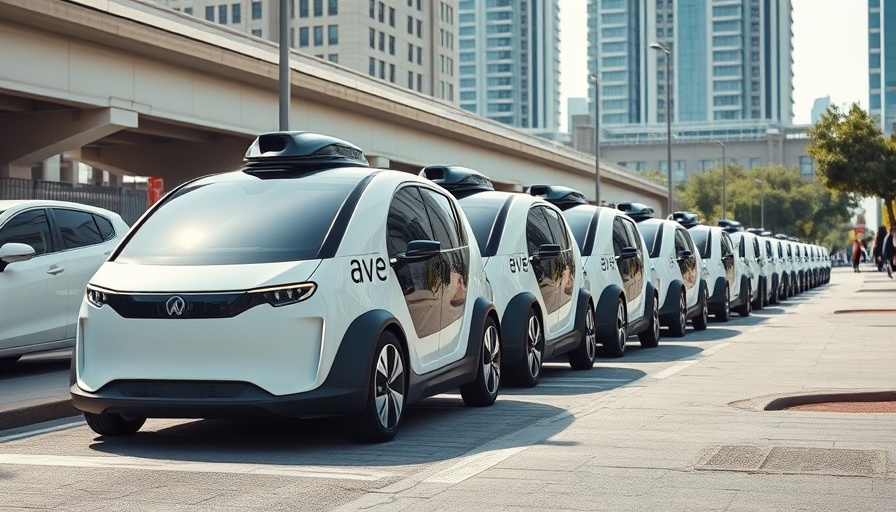
From Hesitancy to Acceptance: The Shift in San Francisco
Just a couple of years ago, the streets of San Francisco were filled with protesters signaling discontent against the encroaching presence of autonomous vehicles (AVs). With activists breaking the law to immobilize these technology marvels and a general backlash against what was viewed as an unsafe innovation, the future looked grim for driverless taxis in the city. Fast forward to the present, and the tide has turned remarkably. Support for autonomous vehicles, particularly Waymo’s robotaxis, has dramatically surged, with new polling data indicating that two-thirds of San Francisco voters now advocate for their operation. This change sheds light on the complex relationship between technology, urban life, and societal readiness for new innovations.
Understanding the Surge in Support
The latest poll, conducted by Grow SF, reveals that the acceptance of Waymo's robotaxis among San Franciscans is not just a superficial trend but a testament to the growing familiarity and comfort with the technology. According to Sachin Agarwal, director of Grow SF, awareness and firsthand experience are crucial factors influencing these shifting attitudes. One in three supporters cited the safety aspect of driverless cars as a decisive factor, underscoring a significant change in perception since the less than 50% support two years prior.
Safety In Numbers: The Statistics Behind the Shift
Waymo has not only transformed public opinion but has also transformed the city’s landscape in terms of safety statistics. Reports indicate that Waymo’s vehicles experience 82% fewer crashes with bikers and motorcyclists and 92% fewer with pedestrians compared to human-driven cars. This sharp decline in incidents is pivotal in alleviating fears surrounding the technology, showcasing its potential to significantly enhance urban safety.
Lessons From Early Controversies
The road to acceptance, however, was anything but smooth. The memories of a Waymo vehicle's involvement in a fatal incident—where a dog was killed—still linger among many residents. Despite the backlash, it appears that experiences since then have allowed citizens to reconcile their initial fears about robotaxis. In fact, Waymo’s growing user base, which has reportedly doubled its ridership in just a few months, highlights a notable embrace of this new technology as it opens its services to more markets like Los Angeles and other areas in the Bay.
A Note From Local Parents
Adding a human element to the advancements in autonomous transportation, countless parents are turning to Waymo for safe rides for their children. Some have reported using the service to chauffeur their kids to school, reflecting a generational trust in what was once an untested concept. One San Francisco parent articulated this sentiment perfectly, describing their child’s solo ride as “the best thing that’s ever happened,” even if it contradicted Waymo’s policy requiring riders to be 18 or older. As safety records continue to improve, it seems parents are willing to embrace the change.
Parallel Innovations and Future Predictions
As one technology leads to the next, the expansion of autonomous vehicle services in San Francisco opens the door for more innovations within the transport sector. Companies like Tesla are ramping up efforts to promote their semi-autonomous vehicle fleets. The expectation is clear: the future of transportation is moving towards innovation, safety, and convenience, with AVs leading the march. As cities around the world look to San Francisco’s experience, there is immense insight to be gained as they consider how to integrate similar services into their own infrastructures.
Conclusion: Embracing the Future of Urban Mobility
The transformation in public sentiment towards Waymo's robotaxis stands as a significant development in the ongoing dialogue regarding technological integration into daily life. With increasing safety data supporting autonomous vehicles and a growing comfort level among the public, it seems that San Francisco might just be at the forefront of a revolutionary shift in urban mobility. As this story unfolds, it encourages us to reflect on our own views regarding technological innovation and how prepared we are for the changes that lie ahead.
For readers interested in staying updated on the evolving landscape of urban transport or if you wish to learn more about innovations in driverless technology, subscribe for regular updates. Embracing new technologies today prepares us for the challenges and opportunities of tomorrow.
 Add Row
Add Row  Add
Add 




Write A Comment